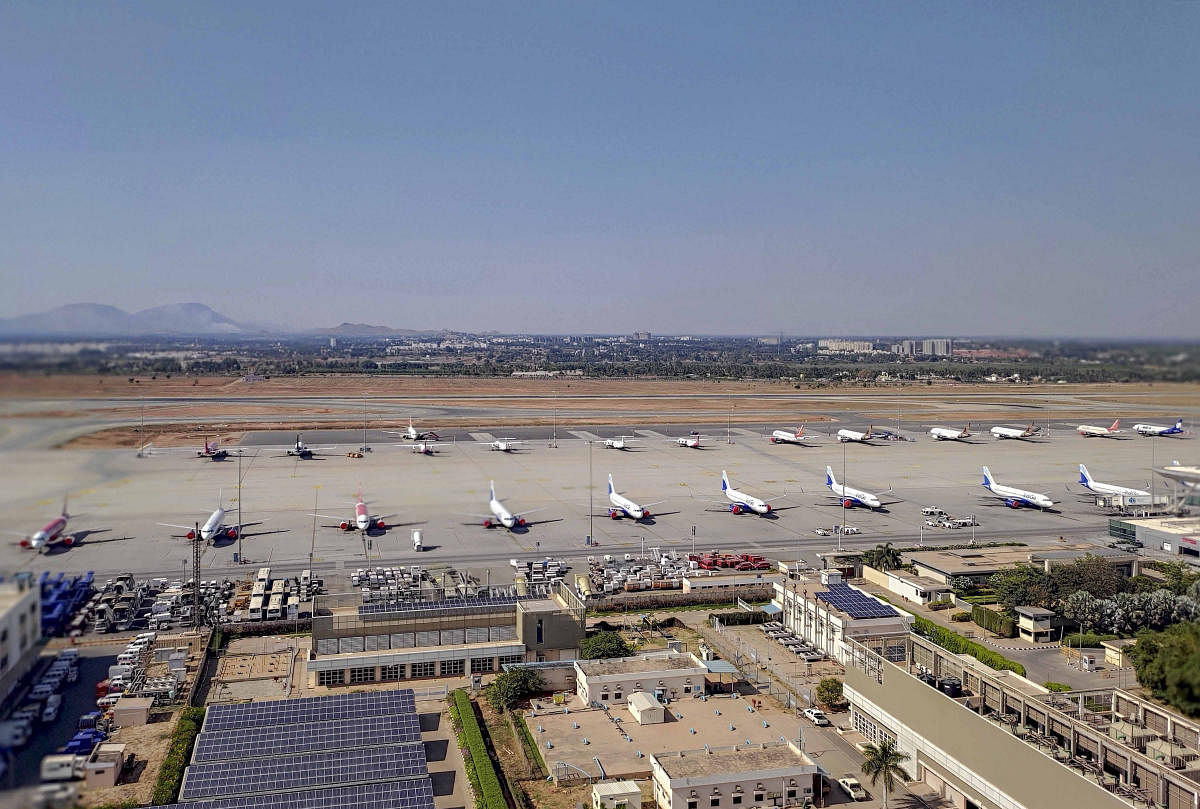
That the Prime Minister should hold a comprehensive meeting (on May 1) to review civil aviation revival strategies when other COVID-19-related crises already seemed overwhelming is an indication of the portents the establishment sees over the Indian skies. The attendance of the home minister and the finance minister of state in addition to the Civil Aviation minister at the meeting underscores the criticality of the sector.
Before the onslaught of COVID-19, India was the fastest growing aviation market in the world and had had a 54-month run of double-digit passenger growth, racing towards becoming the third largest aviation market in the world. Shockingly, last month, the International Air Transport Association (IATA) estimated that Indian aviation would see a 47% fall in passenger demand. That would translate into a loss of $11 billion (around Rs 77,000 crore) in passenger revenue for airlines. Two million jobs are in jeopardy in aviation and allied sectors in India, according to IATA, which has strongly recommended robust government support so that the sector can limp back to normal.
Except for sporadic cargo transportation, all flights have been grounded since March 24 when a lockdown till April 14 was announced. Airlines assumed that they would be flying again from April 15 and kept selling tickets to customers eager to get back to their homes. The successive lockdown extensions to May 3, May 17 and now May 31 have meant that they still cannot get off the ground. There is a tussle on (the Supreme Court is now seized of the matter) between passengers who are miffed that airlines are resisting refunding air fares in respect of their cancelled flights and the cash-strapped airlines who are using all stratagems to hang on to the moneys received by them.
The reasons are not hard to guess. According to informed estimates, the cashflow of most airlines in the scenario that existed before COVID-19 hit them was around two months at the most, except Indigo which may have had cash reserves to last around six months. Evidently, they do not have the cash to refund the amount collected for flights which did not take off because that money would have been spent on fixed costs of the airlines to survive and to evade bankruptcy. By offering to retain the fare money in credit shell accounts for use in the future, they are just deferring the inevitable. Airlines have been forced to take desperate steps in the face of dwindling revenues and no hope of a bail out. Salary cuts, layoffs, deferred payments for some of the fixed charges are the norm now, and it is a matter of time before the cracks begin to show. The exit of one or more airlines from the market altogether cannot be ruled out.
Aviation has been one of the worst-hit sectors and if a total collapse of the sector is to be averted, government aid is inescapable. Support for fixed costs (salaries, lease rentals, etc), exemption, reduction or suspension of airport and infrastructure charges, lowered excise duty on aviation fuel and rationalised (reduced) GST regime for aviation fuel are crying needs of airlines at this juncture. The Federation of Indian Chambers of Commerce and Industry (FICCI) has approached the government for a waiver of interests and delayed charges and accruals to airport operators and to provide loan guarantees to airlines to meet their urgent cashflow needs.
CAPA (Centre For Aviation) India has opined that, given the backdrop of an economy being pummelled by COVID-19-related impacts, the government is unlikely to be able to meet any of these expectations except some functional relief by way of waivers and moratoriums on liabilities toward government entities. Indeed, the Rs 20 lakh crore package announced by the PM, and expounded by the FM, did not proffer even that. While solving immediate cashflow woes of the sector is the succour needed, what was revealed was an intent to ease flying restrictions in Indian Air Force space, a desire to make India into a global hub for MRO, and an award of three airports for operation in PPP mode. None of these steps, even if they are wholly realised, will provide any immediate relief to the haemorrhaging sector.
Amidst all this gloom, there lie opportunities, as demonstrated by Austria which has proposed environmental conditions to be met by airlines that seek a bailout. For us, it would be a good idea to heed the advice of CAPA India that the National Civil Aviation Policy (NCAP) be revised to support the sector during the COVID-19 crisis to guide it through its struggle, stabilisation and recovery phases. India’s aviation ought to be introspecting on current opportunities: of learning from the impact of aviation sector slowdown; of using the idle time available with the Ministry of Civil Aviation and the Director-General of Civil Aviation to review the existing regulatory dispensation, especially in areas that the aviation industry has been clamouring about; of marshalling a consensus amongst all states on including aviation fuel under GST regime; and of appraising and reassessing future infrastructure enhancement plans in view of the economic downturn that COVID-19 has inflicted on the nation.
As far as general aviation, including business aviation, is concerned, the adversity imposed by COVID-19 dictates that, amongst other reforms, the government should look at allowing fractional ownership of aircraft and permit aircraft management companies to change the sector’s fortunes. Needless to say, the manner in which civil aviation is managed through this crisis phase will significantly dictate what state it emerges in from it.